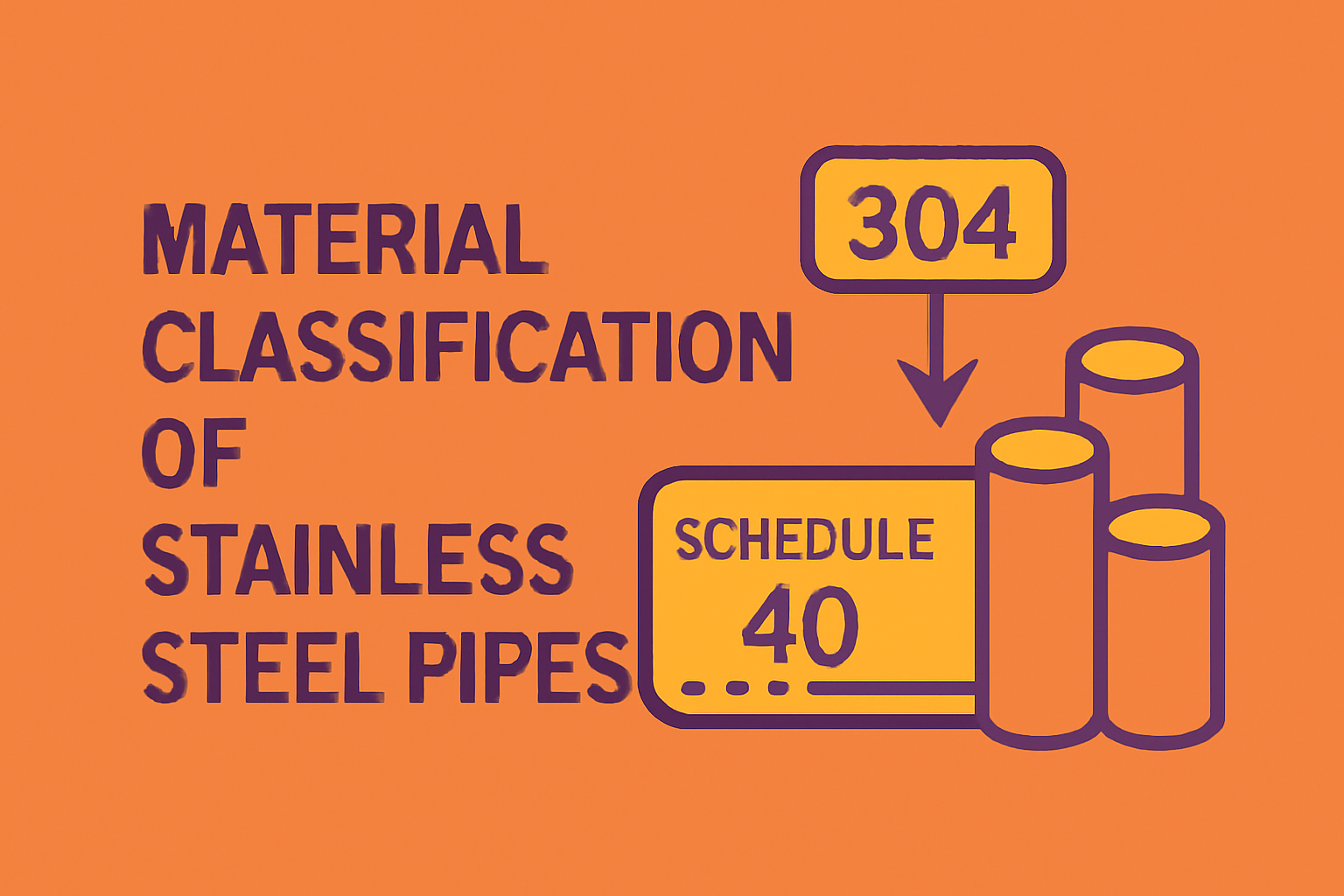Material Classification of Stainless Steel Pipes

Stainless steel pipes are vital in many industries. They are strong, durable, and resist corrosion. These pipes are used in many areas. They are important in construction, oil pipelines, food processing, and marine engineering. However, not all stainless steel pipes are the same. They are sorted by material grades, wall thickness (schedule), production methods, and intended uses. Knowing the difference between sch 10 vs sch 40 is key. This helps you choose the right pipe for pressure and flow needs in different systems. Let’s look at how we categorize stainless steel pipes and why it matters.
Material Grades of Stainless Steel Pipes:
A common way to classify stainless steel pipes is by their material grade. The grade affects the amounts of chromium, nickel, molybdenum, and carbon in the pipe. These elements influence the pipe’s performance directly.
-
- 304 Stainless Steel: This is the most common grade. It has great corrosion resistance and can handle many environmental conditions. It’s commonly found in kitchen equipment, architectural structures, and light industrial piping.
- 316 Stainless Steel:This steel includes molybdenum. This addition makes it highly resistant to chlorides and harsh chemicals. So, it’s perfect for marine, chemical, and pharmaceutical uses.
- Ferritic Stainless Steel (400 Series):These pipes resist corrosion moderately and have high strength. They are good for automotive and industrial uses
- Duplex Stainless Steels: These steels mix austenitic and ferritic properties. They provide high strength and resist stress corrosion cracking. This makes them perfect for the offshore and petrochemical industries.
Choosing the right grade is key to lasting performance in specific work settings.
Wall Thickness and Pipe Schedules:
Another vital classification factor is wall thickness, defined by pipe “schedules.” A pipe schedule shows the wall thickness of a pipe. This thickness affects how much internal pressure the pipe can manage. Two of the most commonly compared schedules are Schedule 10 and Schedule 40:
- Schedule 10 (sch 10) pipes are thinner. They are great for low-pressure tasks. This includes water lines, drainage systems, and some HVAC setups.
- Schedule 40 (sch 40) pipes have thicker walls. They can handle higher pressure systems. These pipes are used in industrial water distribution, steam lines, and oil transport.
Engineers must consider several factors when choosing between these schedules. They need to look at the fluid’s pressure, temperature, and flow rate. This ensures that the pipe can meet operational demands safely.
Manufacturing Methods
The way stainless steel pipes are made affects how they are classified and what they can be used for. The two primary manufacturing types are:
- Seamless Pipes: These pipes are made without welds. This feature gives them great strength. They can also handle high pressures and temperatures well. They are frequently used in oil & gas pipelines, chemical plants, and power generation.
- Welded Pipes: These are formed by rolling stainless steel sheets and welding the seam. Welded pipes are not as strong as seamless pipes. They are cost-effective and work well for many uses. This is especially true at lower pressures.
Tech advancements have greatly enhanced the quality of welded pipes. Now, they can meet tough industrial standards.
Applications Across Industries:
Stainless steel pipes are versatile and widely used across different sectors. In the construction industry, they are used for structural frameworks and architectural features. In oil and gas, they transport petroleum and natural gas under high pressure. The food and beverage sector uses stainless steel piping for clean fluid transport. The marine and pharmaceutical industries depend on it. They value its strength and resistance to corrosion, especially in harsh conditions.
Every application requires careful consideration of the pipe’s material grade, thickness, and manufacturing process. This helps ensure the best performance and long life.
Final Thoughts:
Knowing how to classify stainless steel pipes is key. It helps you choose the right piping solution. Each factor, from material grades to wall thickness and schedules, is vital. They all affect how a pipe performs in its environment.
When you compare sch 10 and sch 40 for a project or check grades for chemical resistance, choose a reliable supplier. Hnyasco.com offers high-quality stainless steel piping solutions. These products meet the diverse needs of industries worldwide. They ensure durability, efficiency, and compliance with international standards.
Industries can choose the best stainless steel pipes by understanding these classifications. This choice boosts operational efficiency and safety, even in tough conditions.



